Chronic lung disease in preterm lambs: effect of daily vitamin A treatment on alveolarization
- PMID: 20382748
- PMCID: PMC2904099
- DOI: 10.1152/ajplung.00380.2009
Chronic lung disease in preterm lambs: effect of daily vitamin A treatment on alveolarization
Abstract
Neonatal chronic lung disease is characterized by failed formation of alveoli and capillaries, and excessive deposition of matrix elastin, which are linked to lengthy mechanical ventilation (MV) with O(2)-rich gas. Vitamin A supplementation has improved respiratory outcome of premature infants, but there is little information about the structural and molecular manifestations in the lung that occur with vitamin A treatment. We hypothesized that vitamin A supplementation during prolonged MV, without confounding by antenatal steroid treatment, would improve alveolar secondary septation, decrease thickness of the mesenchymal tissue cores between distal air space walls, and increase alveolar capillary growth. We further hypothesized that these structural advancements would be associated with modulated expression of tropoelastin and deposition of matrix elastin, phosphorylated Smad2 (pSmad2), cleaved caspase 3, proliferating cell nuclear antigen (PCNA), VEGF, VEGF-R2, and midkine in the parenchyma of the immature lung. Eight preterm lambs (125 days' gestation, term approximately 150 days) were managed by MV for 3 wk: four were treated with daily intramuscular Aquasol A (vitamin A), 5,000 IU/kg, starting at birth; four received vehicle alone. Postmortem lung assays included quantitative RT-PCR and in situ hybridization, immunoblot and immunohistochemistry, and morphometry and stereology. Daily vitamin A supplementation increased alveolar secondary septation, decreased thickness of the mesenchymal tissue cores between the distal air space walls, and increased alveolar capillary growth. Associated molecular changes were less tropoelastin mRNA expression, matrix elastin deposition, pSmad2, and PCNA protein localization in the mesenchymal tissue core of the distal air space walls. On the other hand, mRNA expression and protein abundance of VEGF, VEGF-R2, midkine, and cleaved caspase 3 were increased. We conclude that vitamin A treatment partially improves lung development in chronically ventilated preterm neonates by modulating expression of tropoelastin, deposition of elastin, and expression of vascular growth factors.
Figures


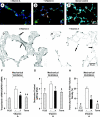
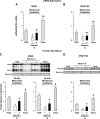
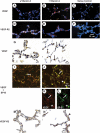
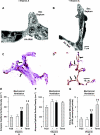
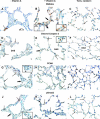
References
-
- Abman SH. Bronchopulmonary dysplasia: “a vascular hypothesis.” Am J Respir Crit Care Med 164: 1755–1756, 2001 - PubMed
-
- Albertine KH, Dahl M, Plopper CG, Hyde DM. Stereological approaches to quantify alveolar formation in the lung. FASEB J 17: A775, 2003
-
- Albertine KH, Jones GP, Starcher BC, Bohnsack JF, Davis PL, Cho SC, Carlton DP, Bland RD. Chronic lung injury in preterm lambs: disordered respiratory tract development. Am J Respir Crit Care Med 159: 945–958, 1999 - PubMed
-
- Albertine KH, Pysher TJ. Impaired lung growth after injury in premature lung. In: Fetal and Neonatal Physiology ( 3rd ed.), edited by Polin RA, Fox WW, Abman SH. New York: Saunders, 2004, p. 942–949
Publication types
MeSH terms
Substances
Grants and funding
LinkOut - more resources
Full Text Sources
Other Literature Sources
Medical
Research Materials
Miscellaneous

